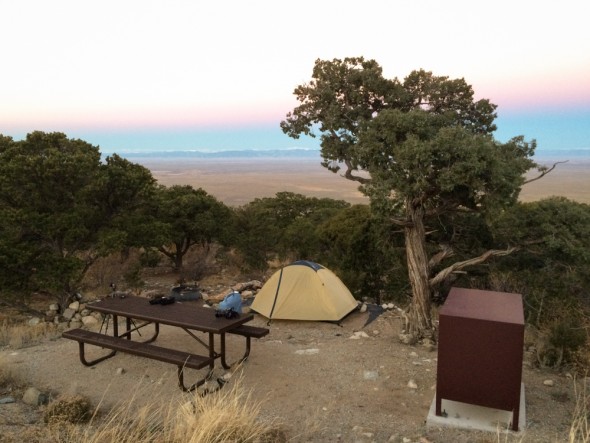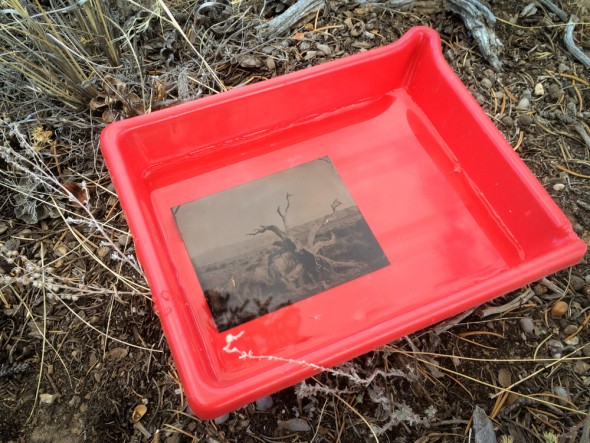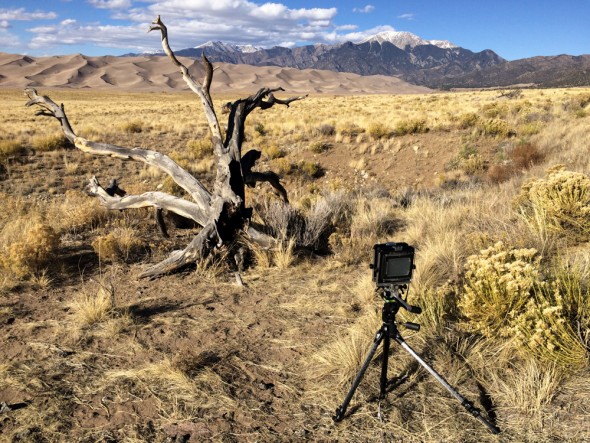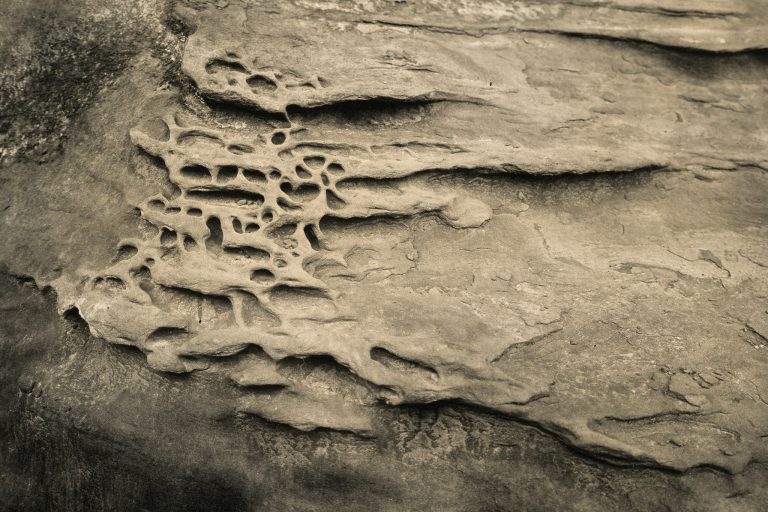
I recently made another stop at the Great Sand Dunes National Park, as I often do on cross-country road trips. This trip – only 5400 miles, from Rhode Island to Maine, then down through West Virginia, Ohio, Kentucky, and on to Arizona – had several reasons: visit my mother and friends, stay at the cabin in WV, defend my master’s degree thesis project, and to pick up some things in Maine that hadn’t made it into the container for the first part of the move to Arizona.
The vast bulk of what I had left behind was all of my tintype making supplies and equipment, including my chemistry, 4×5 camera, and dark tent. With a car full of stuff and a flexible schedule, I had hoped to stop along the way west to make tintypes. It didn’t really work out that way, for various reasons – one of which being a wall of fairly frigid air that was parked over the western half of the country. I’m hardy and I like the cold, but I didn’t have the gear to deal with the low single digits forecast for some of the areas I wanted to visit.
I did force myself to at least give it a try, at my first main stop in The West, and one of my favorite places, the Sand Dunes in southern Colorado. I had intended to camp in the park, and set up right there at my campsite. Some of the sites are right at the edge of the dune field, and it would have been perfect, at least as far as my memory serves. That memory, of camping there in November, must have been faulty, since the campsite closes earlier in the fall.

“I hate to be that guy, but is the campsite really closed?” I asked the park ranger in the Visitor Center. I had hoped it just meant no convenience facilities, maybe no running water, but that I could still camp. Nope. But she did mention a Bureau of Land Management campsite just outside the park at Zapata Falls. “It might be a little chilly, since it’s on the side of a mountain at just over 9000ft.”
It was a little chilly – I think it got down in the mid-teens at night, with a fierce wind – but it was a beautiful campsite with a fantastic view over the San Luis Valley and the National Park.
On the day of the shoot, I scouted out a location and tried to find a place to hide my dark tent from the wind.
The tent was secure enough, and as long as I remember to not kneel down I’d be ok…
I hadn’t really had time to prepare myself as well as I should have, so one of the first orders of business was to mix developer. I’m sure I confused – or worried – a few people driving by.
Did I mention the wind? It was still pretty windy – you might be able to make out the string and tent stake holding my tripod down – and very dry and dusty. The “clean” rinse trays were constantly full of bits of grass and dirt and twigs.
It was really great to be out in nature and to have some time to focus on making one photo.
I had grand visions of shooting multiple locations, trying different things, but by the time I figured out how to deal with the wind, mix chemicals, get set up, and wait for less-harsh light, I only had a couple hours of daylight left.

In the end I made 10 tins of the tree and, once it fell into shadow, one of the distant mountains (which was a pretty terrible tin) and then raced against darkness and an approaching snowstorm (in the panoramic photo above, in the distance) to get packed up and back to my campsite.
The next morning I struck camp and went into the Visitor Center to wash and dry my tins. Between the dry air and their nifty hand dryer the work went quickly.
There are lots of reasons / excuses, but in the end I decided to turn the road trip into a scouting trip for future tintype excursions, and the tintype supplies remained stowed for the duration of the trip.











Pingback: The Nomadic Frog Blog » Archive » Portable Darkroom Version 2
Pingback: The Nomadic Frog Blog » Archive » Great Sand Dunes Centennial Tintype Weekend